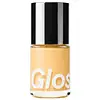Glossier Stretch Fluid Foundation Versus Clinique Even Better Glow™ Light Reflecting Makeup Broad Spectrum SPF 15
What's inside
What's inside
 Key Ingredients
Key Ingredients

 Benefits
Benefits

 Concerns
Concerns

 Ingredients Side-by-side
Ingredients Side-by-side

Octyldodecanol
EmollientDipentaerythrityl Hexahydroxystearate/Hexastearate/Hexarosinate
Skin ConditioningPolyethylene
AbrasiveBeeswax
Emulsion StabilisingTheobroma Cacao Seed Butter
EmollientPersea Gratissima Oil
Skin ConditioningLecithin
EmollientMicrocrystalline Wax
Emulsion StabilisingSilica
AbrasiveMica
Cosmetic ColorantJojoba Esters
EmollientVp/Hexadecene Copolymer
Phenoxyethanol
PreservativeCaprylyl Glycol
EmollientTocopheryl Acetate
AntioxidantTriethoxycaprylylsilane
Iron Oxides
CI 77891
Cosmetic ColorantCI 19140
Cosmetic ColorantOctyldodecanol, Dipentaerythrityl Hexahydroxystearate/Hexastearate/Hexarosinate, Polyethylene, Beeswax, Theobroma Cacao Seed Butter, Persea Gratissima Oil, Lecithin, Microcrystalline Wax, Silica, Mica, Jojoba Esters, Vp/Hexadecene Copolymer, Phenoxyethanol, Caprylyl Glycol, Tocopheryl Acetate, Triethoxycaprylylsilane, Iron Oxides, CI 77891, CI 19140
Ethylhexyl Methoxycinnamate 6%
UV AbsorberTitanium Dioxide 3.8%
Cosmetic ColorantZinc Oxide 3%
Cosmetic ColorantMethyl Trimethicone
Skin ConditioningPhenyl Trimethicone
Skin ConditioningTriethylhexanoin
MaskingDimethicone
EmollientButylene Glycol
HumectantTrimethylsiloxysilicate
EmollientPEG-10 Dimethicone
Skin ConditioningLauryl PEG-9 Polydimethylsiloxyethyl Dimethicone
Skin ConditioningAluminum Hydroxide
EmollientC12-15 Alkyl Benzoate
AntimicrobialGlycerin
HumectantCitrus Grandis Peel Extract
AstringentBetula Alba Bark Extract
MaskingSaccharomyces Lysate Extract
HumectantCamellia Sinensis Leaf Extract
AntimicrobialAstrocaryum Murumuru Seed Butter
EmollientYeast Extract
Skin ConditioningSalicylic Acid
MaskingSodium Hyaluronate
HumectantCaprylyl Glycol
EmollientJojoba Esters
EmollientSodium Myristoyl Sarcosinate
CleansingSodium Chloride
MaskingTocopheryl Acetate
AntioxidantAcetyl Glucosamine
Skin ConditioningCaprylyl Methicone
Skin ConditioningPolyglyceryl-6 Polyricinoleate
EmulsifyingMethicone
EmollientDimethicone Crosspolymer-3
Skin ConditioningLecithin
EmollientMagnesium Ascorbyl Phosphate
AntioxidantTetrahexyldecyl Ascorbate
AntioxidantDisteardimonium Hectorite
StabilisingIsopropyl Titanium Triisostearate
EmollientLaureth-7
EmulsifyingDipropylene Glycol
HumectantDimethicone/PEG-10/15 Crosspolymer
Disodium EDTA
Phenoxyethanol
PreservativeMica
Cosmetic ColorantCI 77891
Cosmetic ColorantCI 77163
Cosmetic ColorantCI 77492
Cosmetic ColorantCI 77491
Cosmetic ColorantCI 77499
Cosmetic ColorantEthylhexyl Methoxycinnamate 6%, Titanium Dioxide 3.8%, Zinc Oxide 3%, Methyl Trimethicone, Phenyl Trimethicone, Triethylhexanoin, Dimethicone, Butylene Glycol, Trimethylsiloxysilicate, PEG-10 Dimethicone, Lauryl PEG-9 Polydimethylsiloxyethyl Dimethicone, Aluminum Hydroxide, C12-15 Alkyl Benzoate, Glycerin, Citrus Grandis Peel Extract, Betula Alba Bark Extract, Saccharomyces Lysate Extract, Camellia Sinensis Leaf Extract, Astrocaryum Murumuru Seed Butter, Yeast Extract, Salicylic Acid, Sodium Hyaluronate, Caprylyl Glycol, Jojoba Esters, Sodium Myristoyl Sarcosinate, Sodium Chloride, Tocopheryl Acetate, Acetyl Glucosamine, Caprylyl Methicone, Polyglyceryl-6 Polyricinoleate, Methicone, Dimethicone Crosspolymer-3, Lecithin, Magnesium Ascorbyl Phosphate, Tetrahexyldecyl Ascorbate, Disteardimonium Hectorite, Isopropyl Titanium Triisostearate, Laureth-7, Dipropylene Glycol, Dimethicone/PEG-10/15 Crosspolymer, Disodium EDTA, Phenoxyethanol, Mica, CI 77891, CI 77163, CI 77492, CI 77491, CI 77499
 Reviews
Reviews

Ingredients Explained
These ingredients are found in both products.
Ingredients higher up in an ingredient list are typically present in a larger amount.
Caprylyl Glycol is a humectant and emollient, meaning it attracts and preserves moisture.
It is a common ingredient in many products, especially those designed to hydrate skin. The primary benefits are retaining moisture, skin softening, and promoting a healthy skin barrier.
Though Caprylyl Glycol is an alcohol derived from fatty acids, it is not the kind that can dry out skin.
This ingredient is also used as a preservative to extend the life of products. It has slight antimicrobial properties.
Learn more about Caprylyl GlycolCi 77891 is a white pigment from Titanium dioxide. It is naturally found in minerals such as rutile and ilmenite.
It's main function is to add a white color to cosmetics. It can also be mixed with other colors to create different shades.
Ci 77891 is commonly found in sunscreens due to its ability to block UV rays.
Learn more about CI 77891Jojoba Esters is a wax created from Jojoba oil. It is an emollient and film-forming ingredient. In bead form, it is an exfoliator.
This ingredient has high oxidative stability, meaning it doesn't break down when exposed to oxygen.
Its similarity to our skin's natural oils makes it a great emollient. Emollients help soften and soothe our skin by creating a barrier on top. This barrier helps trap moisture in, keeping skin hydrated.
It is created using either the hydrogenation or transesterification processes on jojoba oil.
Learn more about Jojoba EstersLecithin is a term for a group of substances found in the cell membranes of plants, animals, and humans. They are made up of mixture of phospholipids.
This ingredient has emollient and emulsifying properties.
As an emollient, lecithen helps soften the skin and creates a barrier to keep moisture in.
As an emulsifier, it also helps prevent water and oil ingredients from separating. Lecithin can also help ingredients be better absorbed by the skin.
This is because the phospholipids in lecithin produce liposomes. Liposomes help other ingredients get through the skin barrier.
Depending on the source of this ingredient, lecithin may not be fungal acne safe. This is because some sources of lecithin come from soybean oil, which may feed the malassezia yeast that feeds fungal acne.
We recommend reaching out to the brand you are purchasing from to inquire about the source of their lecithin.
Some other names for this ingredient include soy lecithin and deoiled soy lecithin.
Learn more about LecithinMica is a naturally occurring mineral used to add shimmer and color in cosmetics. It can also help improve the texture of a product or give it an opaque, white/silver color.
Serecite is the name for very fine but ragged grains of mica.
This ingredient is often coated with metal oxides like titanium dioxide. Trace amounts of heavy metals may be found in mica, but these metals are not harmful in our personal products.
Mica has been used since prehistoric times throughout the world. Ancient Egyptian, Indian, Greek, Roman, Aztec, and Chinese civilizations have used mica.
Learn more about MicaPhenoxyethanol is a preservative that has germicide, antimicrobial, and aromatic properties. Studies show that phenoxyethanol can prevent microbial growth. By itself, it has a scent that is similar to that of a rose.
It's often used in formulations along with Caprylyl Glycol to preserve the shelf life of products.
Tocopheryl Acetate is AKA Vitamin E. It is an antioxidant and protects your skin from free radicals. Free radicals damage the skin by breaking down collagen.
One study found using Tocopheryl Acetate with Vitamin C decreased the number of sunburned cells.
Tocopheryl Acetate is commonly found in both skincare and dietary supplements.
Learn more about Tocopheryl Acetate